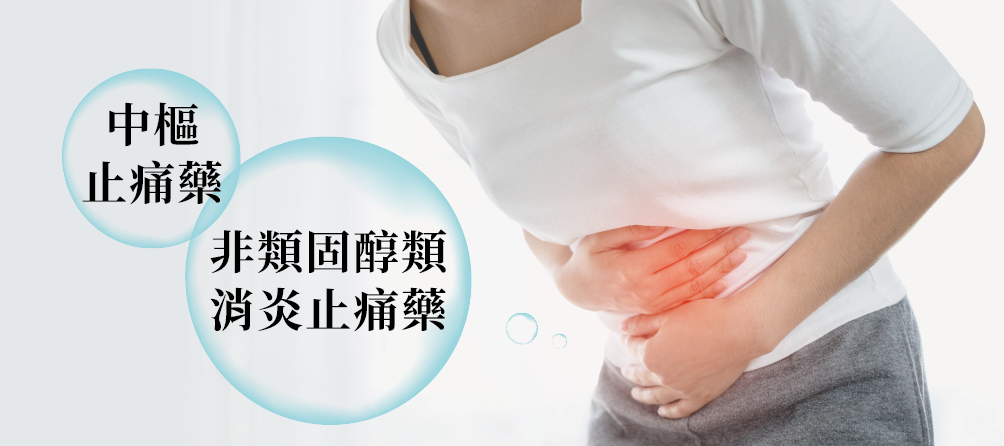Menu
Others
Issue 518 – Relieving Menstrual Pain: How to Choose the Right Pain Reliever?
Menstrual pain (dysmenorrhea) is a common discomfort experienced by many women during their menstrual cycle. In some cases, the severity of the pain can interfere with daily activities and work. Understanding the causes of menstrual pain and how different pain relievers work can help us choose the most effective medication for relief.
According to the Taiwan Food and Drug Administration (TFDA), clinically, menstrual pain is classified into two major types: primary and secondary dysmenorrhea. Primary dysmenorrhea is related to the normal physiological changes of the endometrium and typically begins during adolescence, recurring with each menstrual cycle. The main cause is the excessive release of prostaglandins by the endometrium, which leads to abnormal uterine smooth muscle contractions and results in cramping and pain in the lower abdomen. This type of pain usually peaks just before or during the first 1–3 days of menstruation and gradually subsides afterward. Secondary dysmenorrhea, on the other hand, is caused by pelvic inflammation or uterine-related pathologies. The pain may persist even after menstruation ends, or it may become more intense or irregular depending on the underlying condition.
Two Main Types of Pain Relievers – Distinct Mechanisms of Action
There are two common categories of over-the-counter pain relievers, each with its own appropriate use:
- Central Analgesics
- Medications such as acetaminophen (paracetamol) relieve pain and reduce fever. Commonly found in cold and fever medications, acetaminophen works on the central nervous system, blocking pain signal transmission to achieve analgesia. It also acts on the hypothalamic thermoregulatory center, promoting vasodilation and heat dissipation to reduce fever. However, acetaminophen does not have anti-inflammatory properties.
- Nonsteroidal Anti-Inflammatory Drugs (NSAIDs)
- When the body experiences external or internal injury, it activates a cascade of physiological responses, including the activation of cyclooxygenase (COX) enzymes that lead to the production of prostaglandins and other derivatives. These compounds trigger inflammatory reactions, such as increased local blood flow, redness, swelling, heat, and pain.
- NSAIDs, such as ibuprofen, work by inhibiting COX enzymes, thereby reducing prostaglandin synthesis. This results in anti-inflammatory, analgesic, and antipyretic effects.
Smart Use of Medications to Ease Menstrual Discomfort
Since excess prostaglandins are the main cause of excessive and irregular uterine contractions in primary dysmenorrhea, NSAIDs are generally more effective in relieving menstrual pain. The optimal time to take NSAIDs is when only mild lower abdominal discomfort appears, before prostaglandin levels rise excessively. Early use offers better pain relief compared to taking them after the pain intensifies. However, NSAIDs carry a higher risk of gastrointestinal bleeding and peptic ulcers, especially with prolonged or high-dose use. For individuals who are allergic to NSAIDs, acetaminophen is a safer alternative. While its inhibition of prostaglandin production is weaker, it can still relieve menstrual pain by suppressing pain signals in the central nervous system.
That said, any medication—if used improperly or in excess—can harm the body. The TFDA recommends that individuals consult with physicians, pharmacists, or pharmacy staff when purchasing pain relievers to determine the proper dosage and treatment plan. Additionally, understanding one’s own health condition is essential. If there are noticeable changes in the severity or frequency of menstrual pain, it is advisable to seek consultation and evaluation from a gynecologist to rule out other potential health issues.
Source: Taiwan Food and Drug Administration
Phone: 03-4227151#57270、03-2804814
Fax: 03-4272405
Email: ncu7270@ncu.edu.tw
Address: No. 300, Zhongda Rd., Zhongli District, Taoyuan City 320317, Taiwan (R.O.C.)
Views: 0
Copyright © Health Care Division, National Central University
National Central University - Health Center

